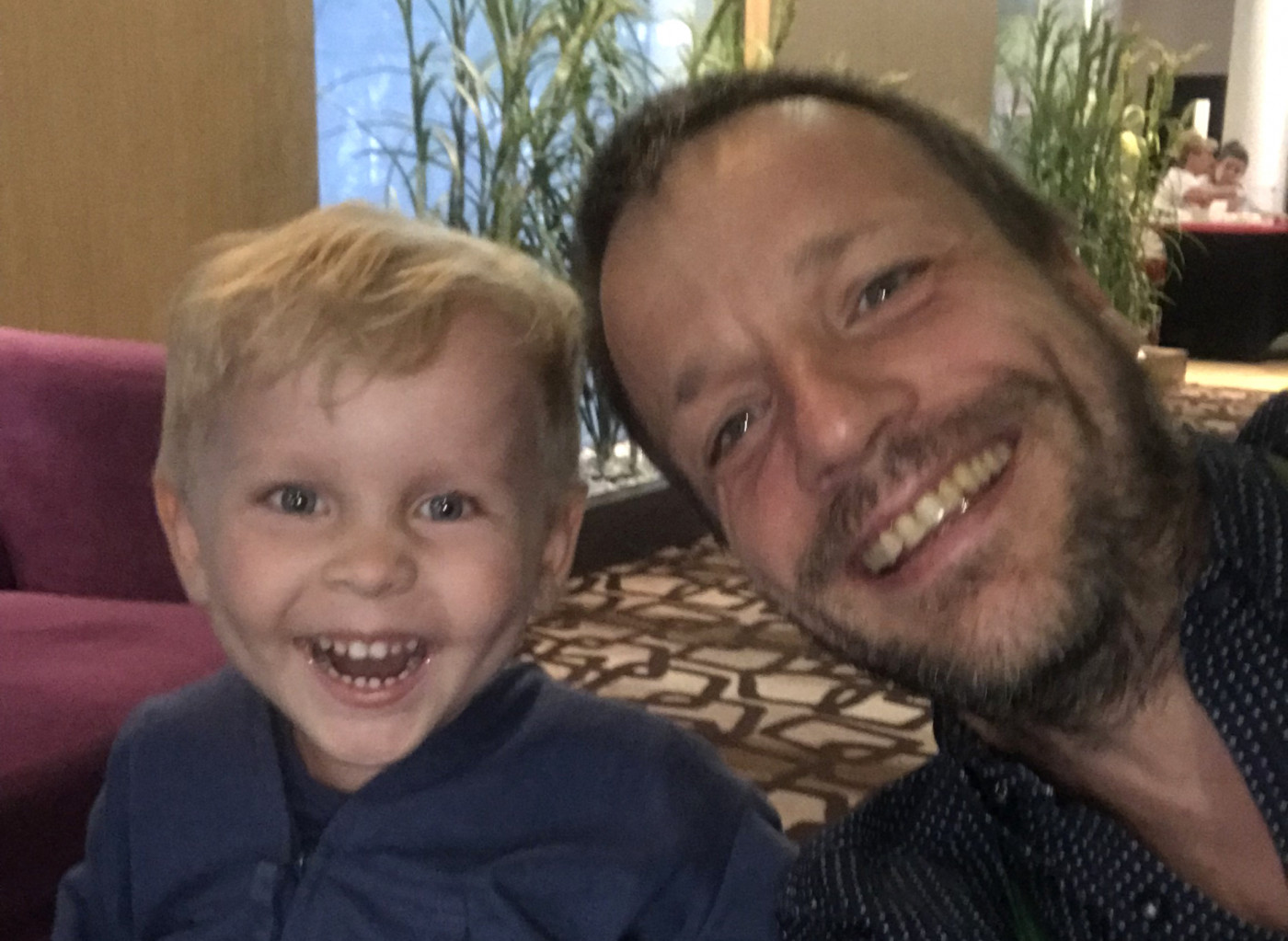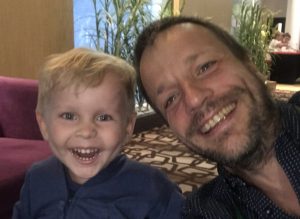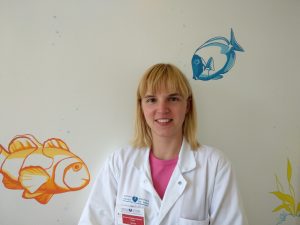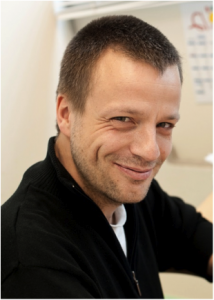Belgian Neurologist Led Efforts to Bring Spinraza to Polish Kids with SMA
Written by |

Laurent Servais with one of the young Polish SMA patients he has treated. (Photo courtesy of Laurent Servais)
A renowned Belgian neurologist and spinal muscular atrophy (SMA) expert has become a hero in Poland for helping dozens of Polish patients obtain early access to Biogen’s Spinraza (nusinersen), the first approved treatment for the disease.
Poland’s SMA community says Laurent Servais never turns a patient away and is as bubbly with children — who account for most of his patients — as the title character in the “Patch Adams” movie.
“He is an extraordinary person and an extraordinary doctor, and he has the best approach with patients I have ever seen,” said Karolina Aragon, a Polish neurologist who’s worked with Servais since January 2017. “With all his genius, he stays very close to people.”
Poles also admire Servais for teaming up with Polish researchers to examine Spinraza’s effects on two under-studied SMA type 1 age groups. Servais said in interviews these Spinraza studies are in children between 3 and 9 years old and in adults with this most severe disease form.
Research shows that Spinraza significantly aids very young type 1 children — newborns to early toddlers — but less is known about how it might help older patients. More recent studies, like SHINE (NCT02594124), has shown benefits in them as well across disease types.
Recently, Servais asked Polish researchers to join him in studying a new digital approach to assessing patients’ condition over time. Magneto-inertial sensing technology gives doctors a much more precise idea of how a patient is doing — appraisals that can improve their treatment.
Besides Spinraza, Servais has helped Poles get early access to other SMA therapies, including Roche’s risdiplam (RO7034067), which is still in clinical trials.
Although Servais will start a dream job at England’s Oxford University in September, he’ll continue treating Poles in Liege, Belgium, where he directs Liege University’s Neuromuscular Center.
Polish community responds
Servais’s Polish connection started in 2016, when he was heading a neurology center in Paris. He did that under a special French early-access provision — Autorisations temporaires d’utilisation — that let SMA type 1 patients receive Spinraza months before its European Union approval. Servais treated other patients under expanded access programs, which make yet-to-be-approved treatments available to people with life-threatening conditions.
Do you use Spinraza? Join our forum and share your experience with other patients and caregivers.
Biogen, based in Cambridge, Massachusetts, conducted trials of Spinraza in the United States, Europe and several other countries before the U.S. Food and Drug Administration approved the therapy in December 2016.
News in August 2016 that Servais was administering Spinraza prompted requests from around the world for him to treat type 1 patients before Spinraza’s EU approval in June 2017.
“Many of the overseas treatment requests came from SMA patients in Poland, and I didn’t speak Polish,” Servais told SMA News Today by phone. So he asked SMA Foundation Poland to find a Polish neurologist to help him. The organization recommended Aragon — a Pole married to a Spaniard — who was looking for a residency and happened to be in Paris.
The two treated up to 60 Polish SMA and Duchenne muscular dystrophy patients in Paris and Liege in the two years before Poland’s health insurance fund agreed to cover Spinraza in December 2018.
The number of Polish patients at Servais’s French and Belgian centers has dropped since, prompting Aragon to return to her Warsaw home to help treat her country’s 800 SMA patients. Servais still gives the therapy to Poles wanting to continue their treatment where they started it.
Servais said an upbeat bedside manner is critical with children, because for a good treatment experience, “they must be happy with you and must have fun with you.”
With toddlers and young children, this can mean telling a story illustrated with mobile-phone animations.
Laughing gas and Facebook videos
Kids tend to love the nitrous oxide, aptly nicknamed laughing gas, Servais uses as an anesthesia before an injection. “After they’ve tried laughing gas, many of them ask when they can come for the next injection,” he said.
Treating newborns with SMA type 1 has convinced Servais that it’s paramount to give Spinraza before a child displays symptoms. “A few weeks’ difference in the start of treatment gives you a chance to make a child normal or nearly normal.”
To illustrate how well babies can do when doctors start them on Spinraza right after birth, Servais created a Facebook page that features videos of treated newborns. Parents must agree before a video is posted.
“Everyone with an asymptomatic child that we had to convince in Belgium to move forward with Spinraza, we did it using videos,” he said.
Seeing how much Spinraza helps asymptomatic children has led to him championing SMA screening for newborns, which he discusses at conferences and with journalists. One of the latest places where he spread the word was at SMA Foundation Poland’s annual July 5–7 conference in Warsaw.
An encouraging sign, he thought, is that 16 countries have asked for information on the newborn screening program his team implemented in 2018.
A key area of his research as a professor of pediatric neuromuscular diseases at the MDUK Oxford Neuromuscular Center will be the new digital technology for assessing patients’ condition. The London-based Muscular Dystrophy UK and Oxford University jointly established the center in January, whose main objective is to take potential treatments from the lab to clinical trials.
“The digital technology is 100 times more precise than the current clinical scale,” which combines doctors’ observations and patients’ assessments of their condition, Servais said, adding that using the technology to its fullest “will allow much shorter and more efficient clinical trials.”









